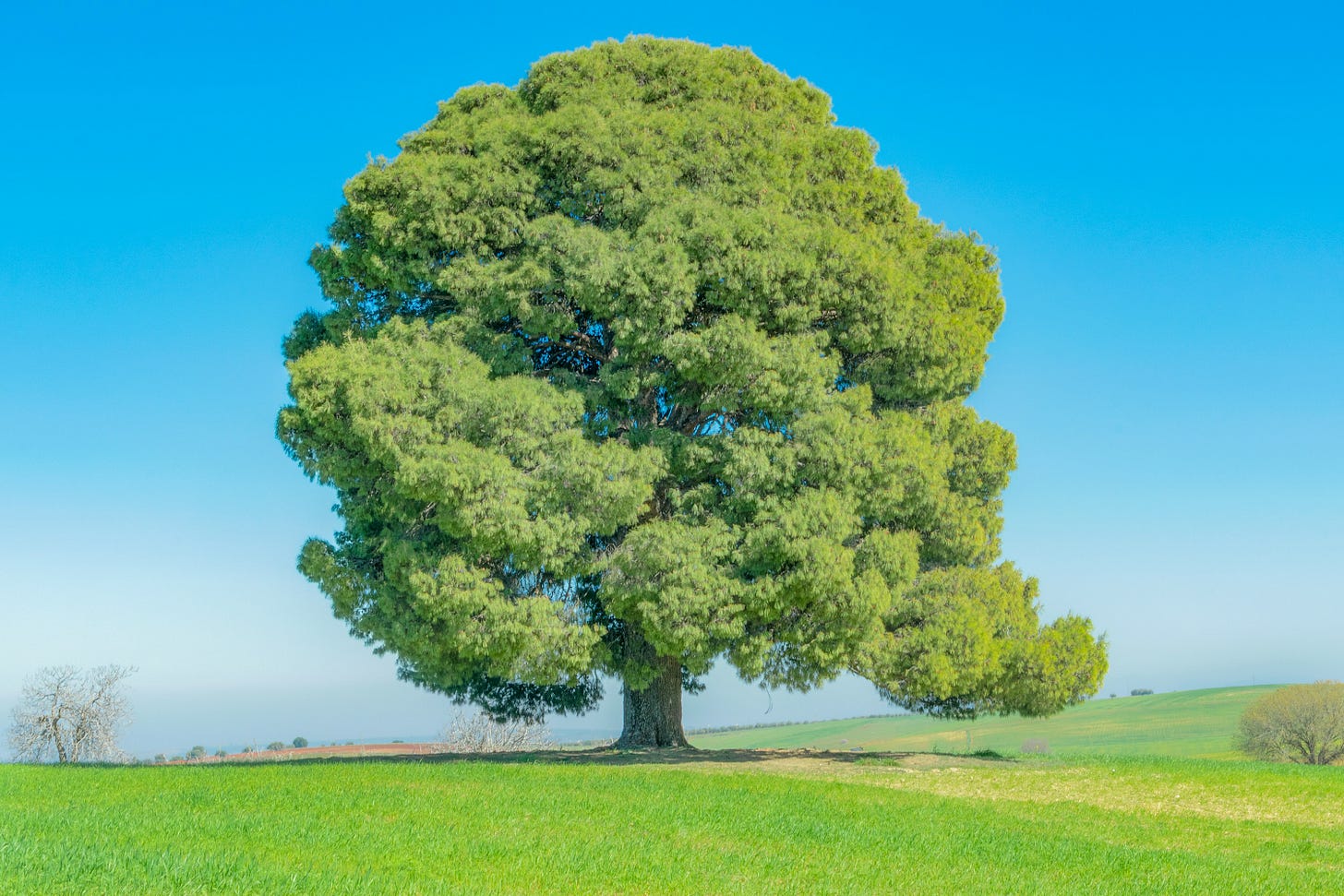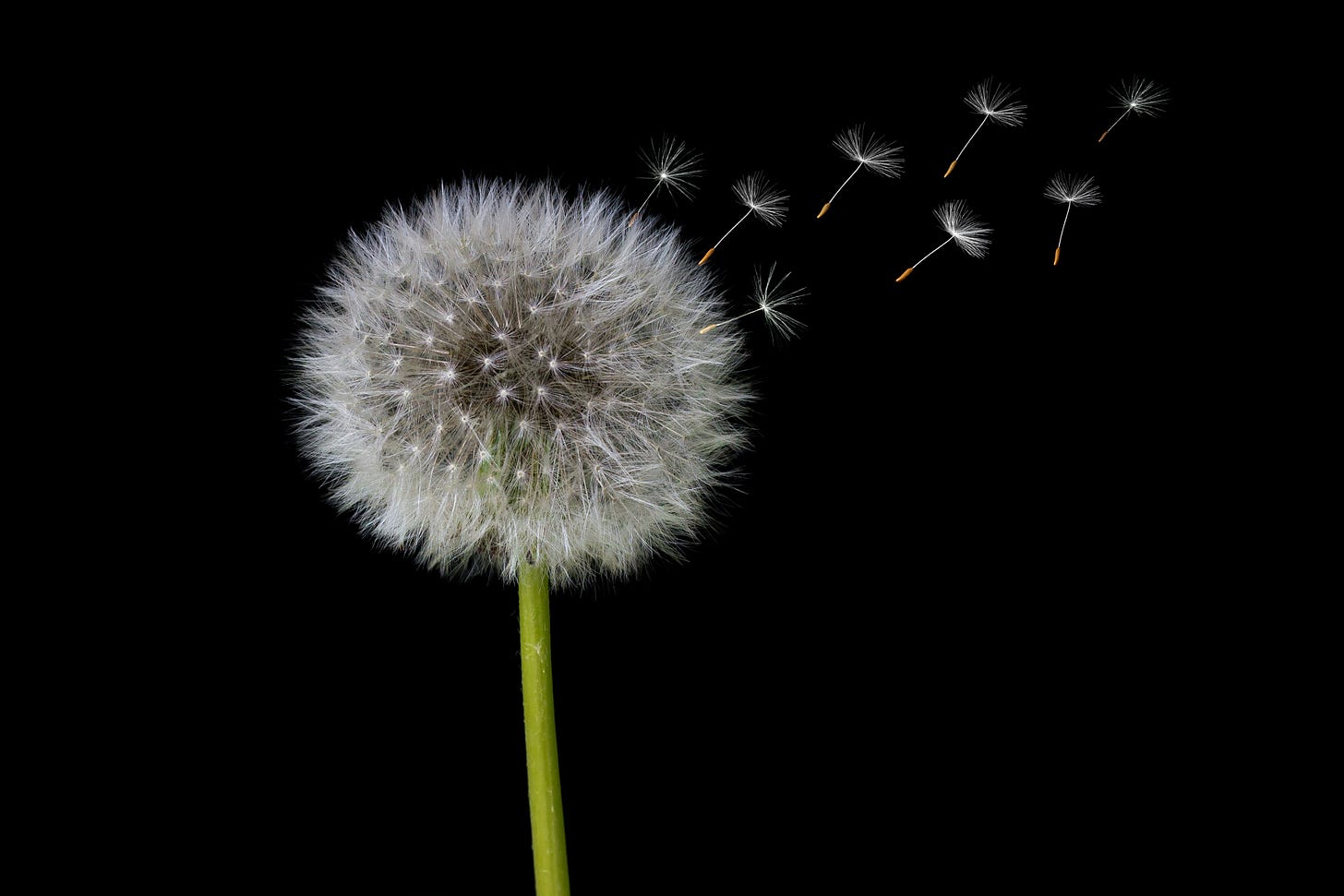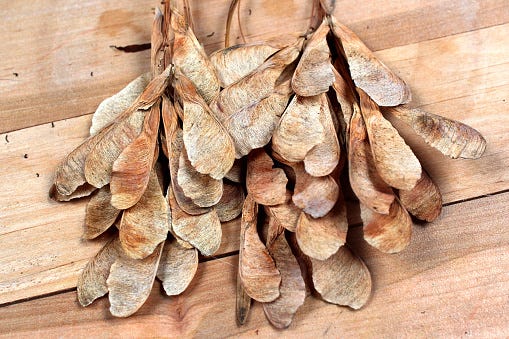Trees walk
Explaining Reid's paradox of rapid plant migration
🏷️ Categories: Botany, Geography
"Paradox" is a fancy way of saying that we still don't know as much as we think we do.
In the 19th century, Clement Reid noticed something strange about the distribution of European oaks.
The areas where oaks were found after the last glacial period couldn't be explained by the seed dispersal theory; something or someone had carried the seeds much further than expected. As a result, the regions with European oaks were far more extensive and distant than the theory could account for (Reid, 1899).
The oaks were moving very quickly.

How do trees move?
Trees move between generations.
The seeds a tree releases are carried by the wind, animals, and other factors, eventually germinating and giving rise to the next generation. Thus, between generations, trees "walk." Typically, the seed dispersal zone from the parent tree is not very large. Depending on the plant, seeds usually remain within tens or hundreds of meters and rarely beyond that.
Some seeds rely on the wind for dispersal; these are called samaras.
Others are more sophisticated and melancholic in their flight, like dandelions.

Other tree species rely on animals, generally birds.
In Reid's time, it was already known that birds dispersed most seeds, and oaks were this type of tree. For this reason, Reid concluded that birds had carried oak seeds farther than expected for some reason.
Makes sense, right?

Well, no.
Who was behind the mystery?
As I said at the beginning, "Paradox" is a fancy way of saying that we still don't know as much as we think we do. I love the solution to the paradox because it's something very simple that had gone unnoticed.
The key is the scale at which you observe.
Look at the graph, and you'll understand.
Note the dispersal distance, the number of dispersed seeds, and the animal doing it.
Who disperses many seeds but nearby?
Birds.
Who disperses few seeds but very far?
Mammals.
On a small scale, birds are the main dispersers. No one else can collect seeds and multiply the species like them. Mammals, like deer, are much less meticulous gardeners (Powell & Zimmermann, 2004; Jordano et al., 2007).
From the perspective of each individual seed, there's no better luck than being transported by a bird, ant, or similar. It guarantees a good home, and you’ll probably become a beautiful tree someday. However, on a large scale, mammals are much more important than birds. When a deer eats a fruit, it carries the seed in its stomach very far and might establish a new settlement for its species. It's harder for the seed to thrive, but it can be the pioneer, the seed that ventured out and found a distant home (Myers et al., 2004; Clark et al., 1998).
Without mammals, oaks would have remained in northern Europe, as Reid expected. Instead, they hitchhiked across the continent.
Current climate change
It's time to hitchhike to keep living.
With rising temperatures and changing climate patterns, many species need to migrate to new habitats more suitable for their survival. Plants, in their own way, will "walk" by dispersing seeds in search of a favorable place. Wind, deer, ants, birds, and others are their trains to a new destination.
It's known that some can move up to 4 km/year in eastern North America, regardless of the dispersal mechanism (King and Herstrom, 1997). That's a significant distance for a living being that doesn't "walk."
We'll have to see if the walking pace is enough to reach new habitable areas or if, on the contrary, climate change advances faster.
✍️ Quote of the day: "Plant seeds of happiness, hope, success, and love; it will all come back to you in abundance. This is the law of nature." Steve Maraboli in Unapologetically You.
See you soon, take care 👋!
References 📚
Clark, J. S., Fastie, C., Hurtt, G., Jackson, S. T., Johnson, C., King, G. A., Lewis, M., Lynch, J., Pacala, S., Prentice, C., Schupp, E. W., Webb, T., & Wyckoff, P. (1998). Reid’s Paradox of Rapid Plant Migration. BioScience/Bioscience, 48(1), 13-24. https://doi.org/10.2307/1313224
Jordano, P., García, C., Godoy, J. A., & García-Castaño, J. L. (2007). Differential contribution of frugivores to complex seed dispersal patterns. Proceedings Of The National Academy Of Sciences Of The United States Of America, 104(9), 3278-3282. https://doi.org/10.1073/pnas.0606793104.
King, G. A., & Herstrom, A. A. (1997). Holocene tree migration rates objectively determined from fossil pollen data. En Springer eBooks (pp. 91-101). https://doi.org/10.1007/978-3-642-60599-4_7
Maraboli, S. (2013). Unapologetically you: Reflections on Life and the Human Experience.
Myers, J. A., Vellend, M., Gardescu, S., & Marks, P. L. (2004). Seed Dispersal by White-Tailed Deer: Implications for Long-Distance Dispersal, Invasion, and Migration of Plants in Eastern North America. Oecologia, 139(1), 35–44. http://www.jstor.org/stable/40006409
Nathan, R. (2006). Long-Distance Dispersal of Plants. Science, 313(5788), 786-788. https://doi.org/10.1126/science.1124975
Powell, J. A., & Zimmermann, N. E. (2004). Multiscale Analysis of Active Seed Dispersal Contributes to Resolving Reid’s Paradox. Ecology, 85(2), 490–506. http://www.jstor.org/stable/3450213
Reid, C. (1899). The Origin of the British Flora.







Interesting! I believe we had what is called a 'mast' year last year, meaning the oaks dropped an astonishingly high number of acorns more than they normally do. It hurts me to have to remove so many of these hardy volunteer trees, but I just can't let them grow six inches from the foundation of our house. Fingers crossed some of them will migrate far enough away that I can leave them be.
Could the mammals include man? Obviously squirrels.